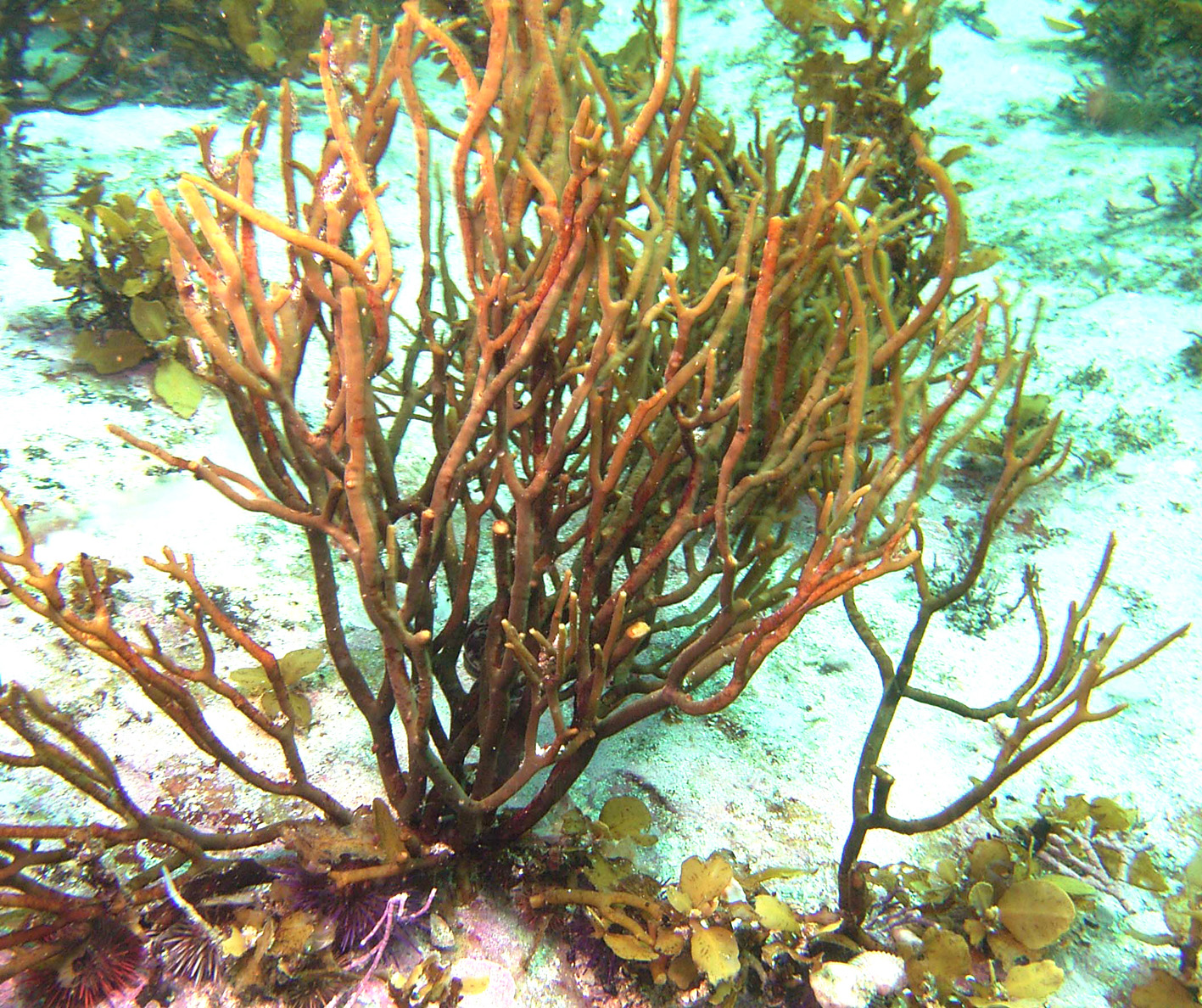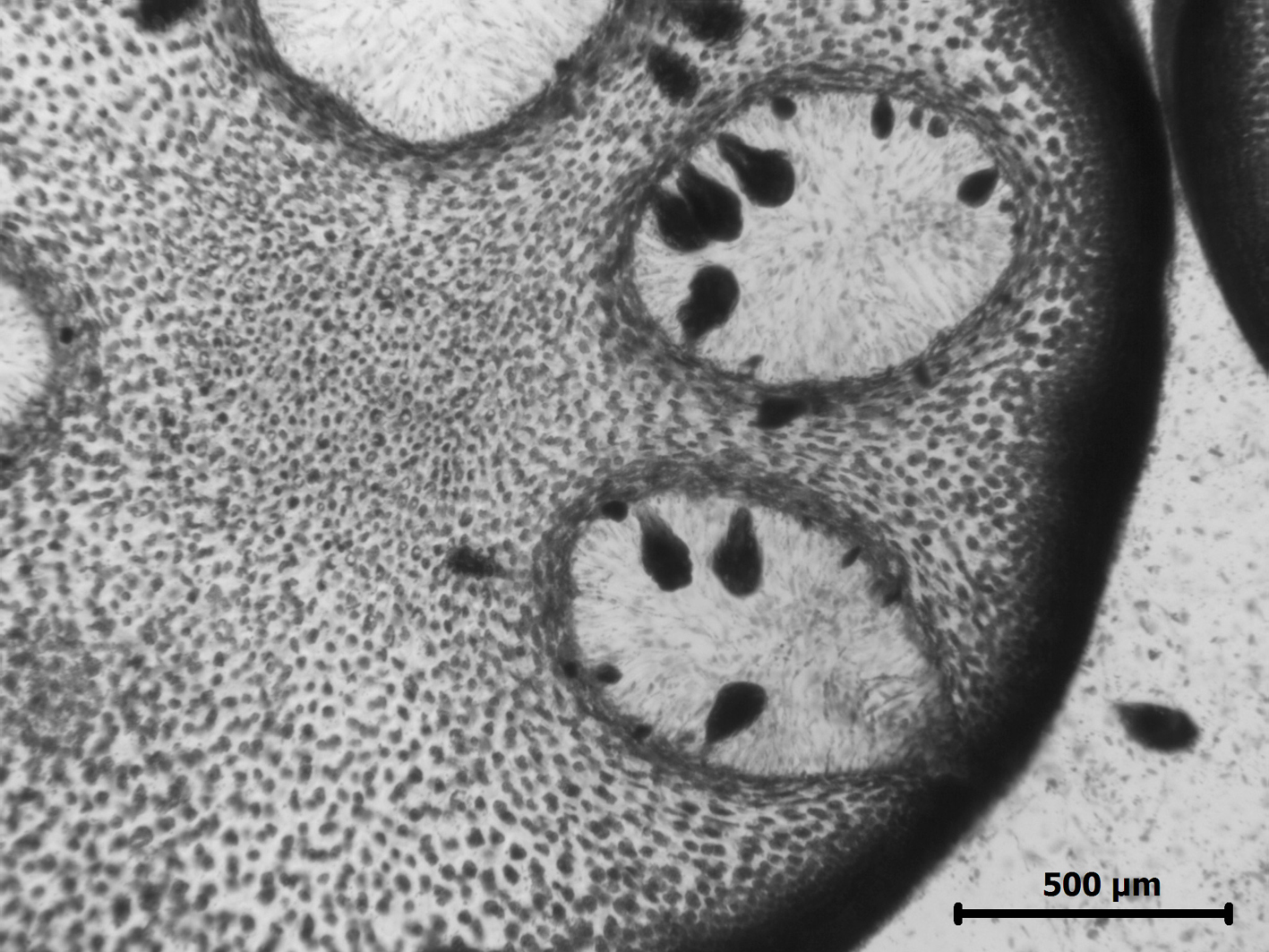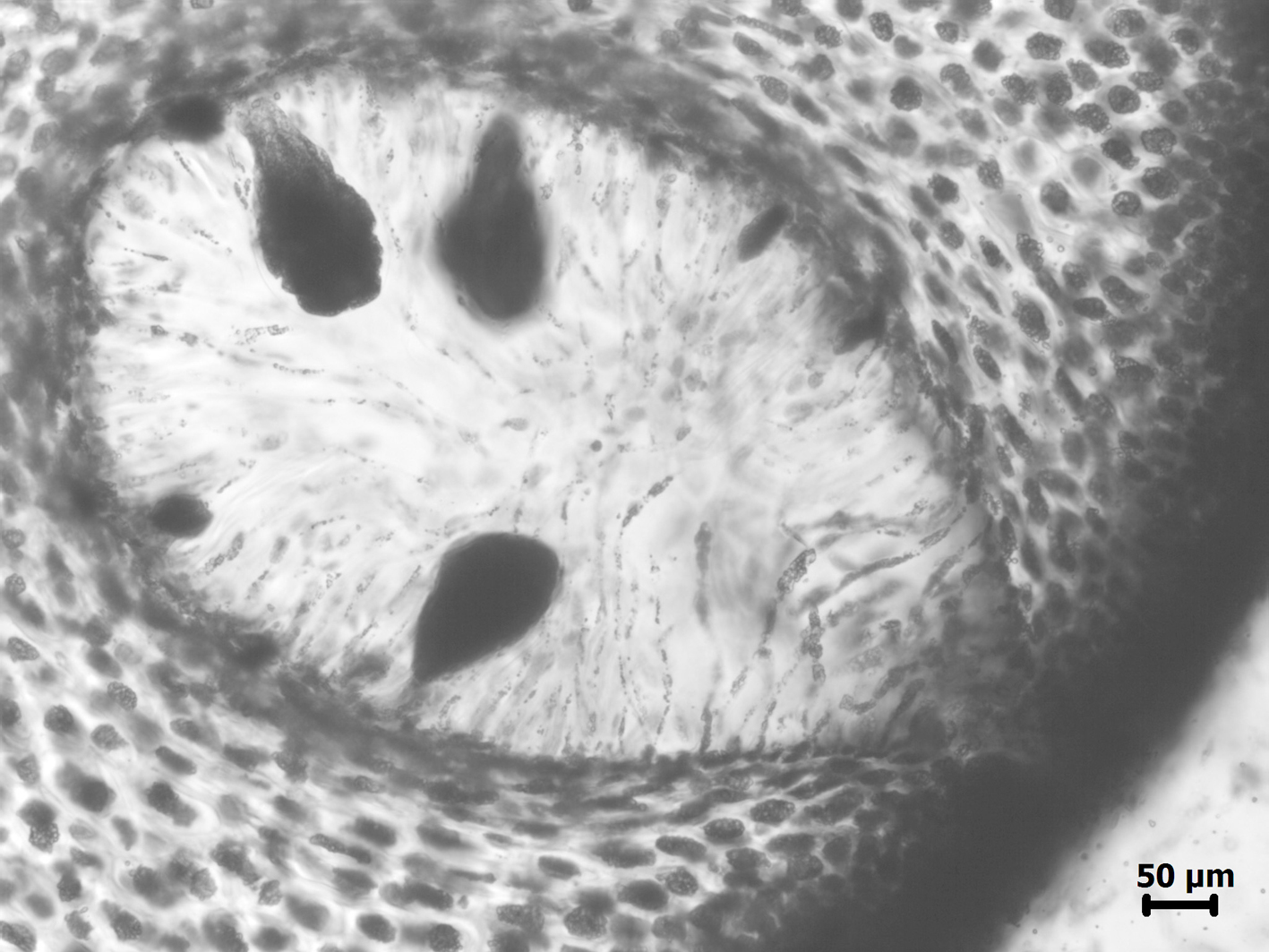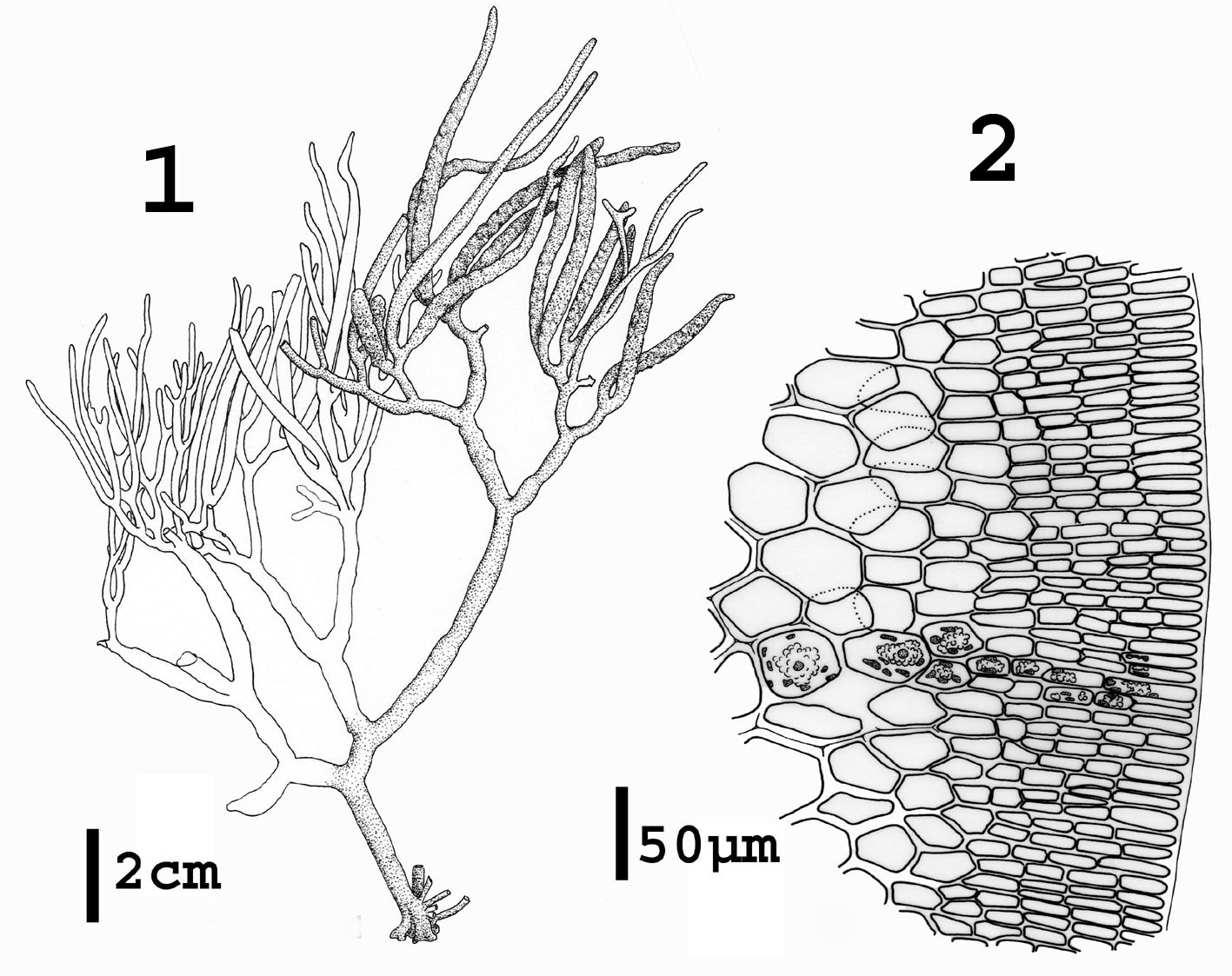Seaweeds of the South African South Coast


Order Fucales
Family Bifurcariopsidaceae
Bifurcariopsis capensis (Areschoug) Papenfuss 1940: 212-213, fig. 10
Plants yellowish-brown to brown, erect, solitary, to ca. 30 cm in height, with a single conical, grooved, woody holdfast from which a system of repeatedly bifurcate terete branches arises. Erect primary lateral branches also arise directly from the holdfast without the formation of a specialized condensed main axis. Primary branches also woody in texture with the primary laterals up to 6 mm in diameter and each order of branches successively thinner. Branching pattern monopodial and triradial. Structure parenchymatous; medulla of elongated axial cells (filaments) 40 -50 µm in diameter in cross section; cortex of many layers of smaller cells 20-30 µm long in cross section.
Life history with single macroscopic diploid phase in which gametes are produced by meiosis in specialized receptacles. Receptacles formed by slight thickening of ultimate branchlets (from ca. 2 mm to ca. 3 mm in diameter) with fertile portions often more than 10 cm long, containing numerous conceptacles. Conceptacles bisexual; 4 eggs produced per oogonium; antheridia clustered terminally on long unbranched filaments.
Collections, ecology and regional distribution
Found in the lower eulittoral, shallow sublittoral and rock pools from Groen River on the west coast to Cape Infanta (6-24). Probably perennial, dying back to main axes in winter (Stegenga et al. 1997).
World distribution: Monospecific genus endemic to South Africa.
Type locality: Table Bay, South Africa (Silva et al. 1996).
Note: Previously regarded as belonging to the family Cystoseiraceae (Jensen 1974), this monospecific genus was placed in its own family by Cho et al. (2006), in their molecular study of representatives of all families in the Fucales.

Bifurcariopsis capensis, False Bay.

Bifurcariopsis capensis, cross section through receptacle showing two conceptacles.

Bifurcariopsis capensis, cross section showing detail of a conceptacle with oogonia and filamentous antheridiophores.

Bifurcariopsis capensis, XS. 1. Habit of fertile thallus. 2. Detail of cross section. Reproduced from Stegenga et al. (1997).
References Bifurcariopsis
Cho, G.Y, Rousseau, F., Reviers, B. de & Boo, S.M. (2006). Phylogenetic relationships within the Fucales (Phaeophyceae) assessed by the photosystem I coding psaA sequences. Phycologia 45: 512-519.
Jensen, J.B. (1974). Morphological studies in Cystoseiraceae and Sargassaceae (Phaeophyceae) with special reference to apical organization. University of California Publications in Botany 68: 1-61.
Papenfuss, G.F. (1940). Notes on South African marine algae. I. Botaniska Notiser 1940: 200-226, 16 figs.
Silva, P.C., Basson, P.W. & Moe, R.L. (1996). Catalogue of the benthic marine algae of the Indian Ocean. University of California Publications in Botany 79: 1-1259.
Stegenga, H., Bolton, J.J. and R. J. Anderson. 1997. Seaweeds of the South African west coast. Contributions from the Bolus Herbarium 18: 655 pp.
Cite this record as:
Anderson RJ, Stegenga H, Bolton JJ. 2016. Seaweeds of the South African South Coast.
World Wide Web electronic publication, University of Cape Town, http://southafrseaweeds.uct.ac.za; Accessed on 07 January 2026.